As per my understanding, there will be one job for each action in Spark.
But often I see there are more than one jobs triggered for a single action.
I was trying to test this by doing a simple aggregation on a dataset to get the maximum from each category ( here the "subject" field)
While examining the Spark UI, I can see there are 3 "jobs" executed for the groupBy operation, while I was expecting just one.
Can anyone help me to understand why there is 3 instead of just 1?
students.show(5)
+----------+--------------+----------+----+-------+-----+-----+
|student_id|exam_center_id| subject|year|quarter|score|grade|
+----------+--------------+----------+----+-------+-----+-----+
| 1| 1| Math|2005| 1| 41| D|
| 1| 1| Spanish|2005| 1| 51| C|
| 1| 1| German|2005| 1| 39| D|
| 1| 1| Physics|2005| 1| 35| D|
| 1| 1| Biology|2005| 1| 53| C|
| 1| 1|Philosophy|2005| 1| 73| B|
// Task : Find Highest Score in each subject
val highestScores = students.groupBy("subject").max("score")
highestScores.show(10)
+----------+----------+
| subject|max(score)|
+----------+----------+
| Spanish| 98|
|Modern Art| 98|
| French| 98|
| Physics| 98|
| Geography| 98|
| History| 98|
| English| 98|
| Classics| 98|
| Math| 98|
|Philosophy| 98|
+----------+----------+
only showing top 10 rows
While examining the Spark UI, I can see there are 3 "jobs" executed for the groupBy operation, while I was expecting just one.

 Can anyone help me to understand why there is 3 instead of just 1?
Can anyone help me to understand why there is 3 instead of just 1?
== Physical Plan ==
*(2) HashAggregate(keys=[subject#12], functions=[max(score#15)])
+- Exchange hashpartitioning(subject#12, 1)
+- *(1) HashAggregate(keys=[subject#12], functions=[partial_max(score#15)])
+- *(1) FileScan csv [subject#12,score#15] Batched: false, Format: CSV, Location: InMemoryFileIndex[file:/C:/lab/SparkLab/files/exams/students.csv], PartitionFilters: [], PushedFilters: [], ReadSchema: struct<subject:string,score:int>